One of the things I like about working at The Chopping Block is that our team shares their culinary experience and encourages everyone to experiment with different ingredients and cooking techniques. Whether we come from a professional restaurant or catering background, or simply enjoy cooking at home, every day is an opportunity to learn something new. Each of us has an area of specialization where we become the “go to” person on a specific topic. For example, Ida, one of our class assistants with a wealth of knowledge about vegan cooking, makes the most amazing roasted chickpeas (garbanzo beans). That got me thinking… what would it taste like if I used a variety of different pulses and spices? So I decided to experiment with a can of organic 6-bean salad and a Middle Eastern flavor profile.
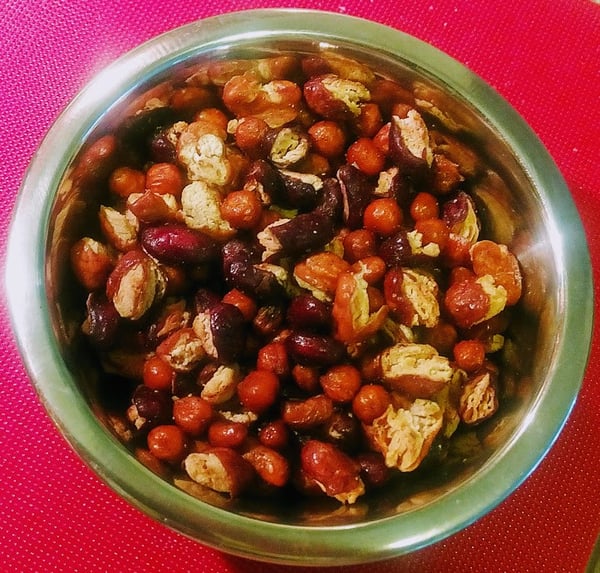
If you’ve never heard of pulses, they are the edible seeds of plants in the legume family. Pulses grow in pods and come in a variety of shapes, sizes and colors. The United Nations Food and Agriculture Organization (FAO) recognizes 11 types of pulses: dry beans, dry broad beans, dry peas, chickpeas, cow peas, pigeon peas, lentils, Bambara beans, vetches, lupins and pulses nes. Pulses are annual crops that yield between one and 12 grains or seeds. The term “pulses” is limited to crops harvested solely as dry grains, which differentiates them from other vegetable crops that are harvested while still green.
Pulses have a long, rich history. The first evidence of pulses comes from 11,000 years ago in the Fertile Crescent, a region in the Middle East which was home to some of the earliest human civilizations. As of 2014, 173 different countries grew and exported pulses. Pulses are widely used in cuisines around the world, particularly in Mediterranean countries, India, Pakistan and the Near East. Pulses are healthy, nutritious and easy to cook with. Growing pulses also promotes sustainable agriculture, as pulse crops help decrease greenhouse gases, increase soil health and use less water than other crops.
The health benefits of pulses are clear:
- Low fat and low sodium
- Good source of iron and protein
- Excellent supplier of fibre, folate and potassium
- Low glycemic index
- Cholesterol-free and gluten-free
Back to our experiment… here’s what you’ll need.
Roasted Pulses
- 1 can of beans (I used chickpeas, dark red kidney beans, black-eyed peas, white beans, lima beans and romano beans)
- 1 tablespoon of extra-virgin olive oil
- ½ teaspoon each of coarse Kosher salt, ground black pepper, ground cumin and ground cinnamon
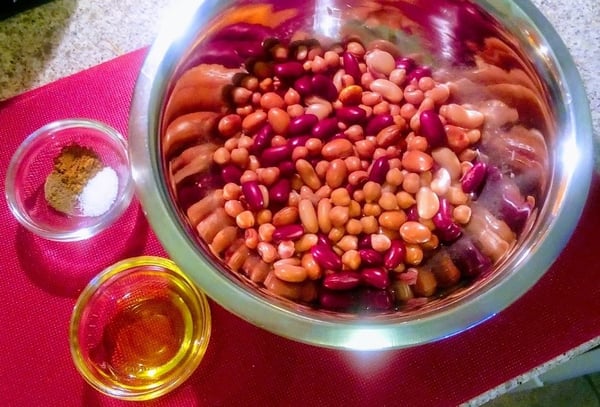
First, preheat the oven to 400°F. Drain and thoroughly rinse a can of beans. Pat dry with a paper towel – the drier the beans, the better.
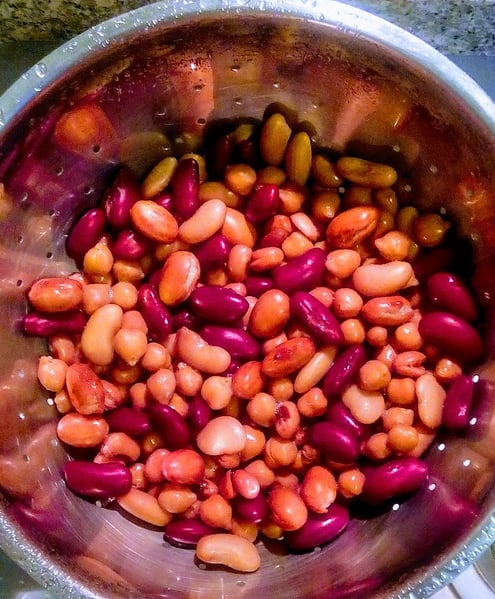
Spread the beans onto a flat surface in a single layer and pat dry again. Let sit for a few minutes to make sure they’re dry. You don’t need to remove the skins or any broken beans – they’ll all crisp up nicely.
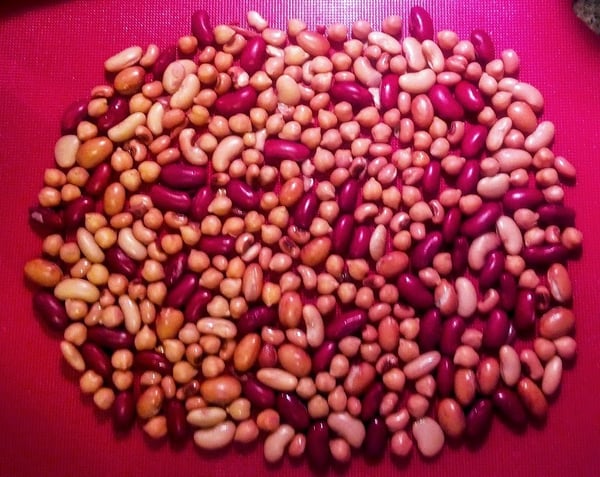
Transfer the beans into a bowl, drizzle the olive oil over the beans, sprinkle with the spice mixture and toss to mix well.
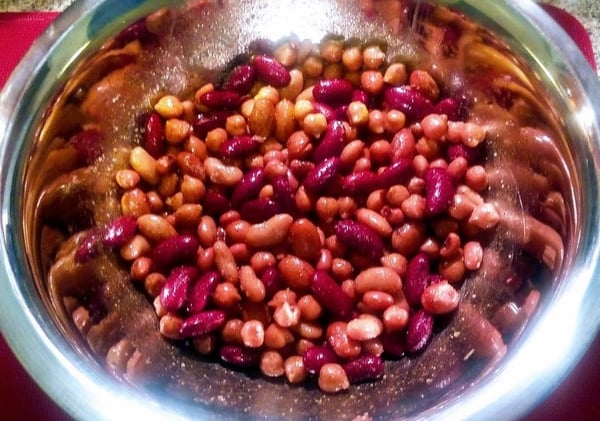
Spread the beans onto a rimmed sheet pan (jelly roll pan) lined with aluminum foil or parchment paper in a single layer. Roast at 400°F for 35-40 minutes or until crunchy.
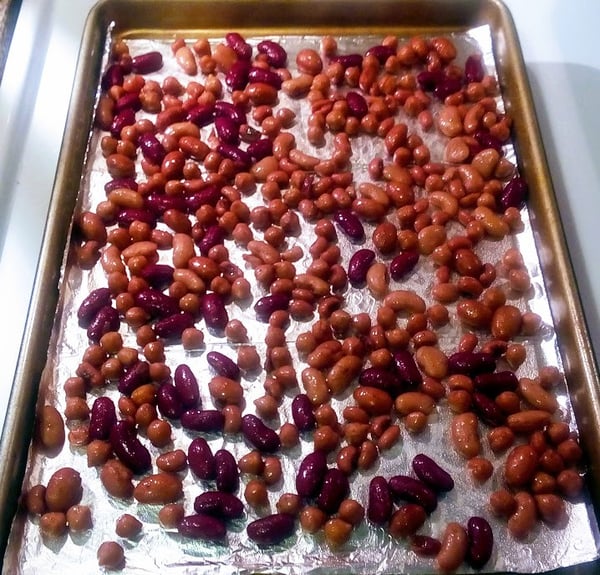
After you are done roasting, turn off the oven, and allow the oven to cool with the beans still inside. The key to the crunchiest roasted beans is to completely dehydrate them. Food is usually dehydrated at a low temperature for a long amount of time. By allowing the beans to continue to cook at a low temperature after roasting at a high temperature, you will continue to cook the inside and dehydrate them completely without burning them. Leave them in until the oven cools.
Eat the roasted beans as a quick snack, use instead of croutons in a salad or top them in a bowl of creamy soup to add crunch and texture. Or grind the roasted beans into a powder and use to coat fish, chicken, meat or vegetables for baking or frying. You can also mix ground beans with tahini to make hummus, or sour cream or yogurt to make a cold dip, or even use fine ground bean flour in recipes to bake brownies, quick breads, cookies and cakes.
If you are looking for more easy, healthy meal ideas, join The Chopping Block for Cooking with Kefir on Wednesday, April 25 at 7pm at Lincoln Square.
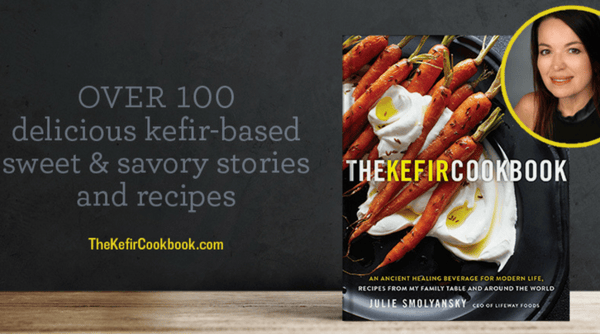
Kefir is one of the most popular superfoods on the market, and you'll learn how to cook with the tart, tangy cultured milk that is low in sugar, lactose free, and an excellent source of protein, calcium, and B vitamins. You'll sample some of the more than 100 inventive, globally inspired recipes featuring the popular probiotic featured in The Kefir Cookbook: An Ancient Healing Superfood for Modern Life, Recipes from My Family Table and Around the World. The just-released book is included in the price of the class!











